












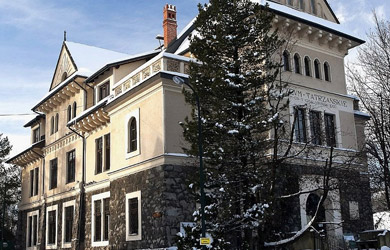
MAIN BUILDING
(branch of the Tatra Museum)
Opened:
Monday closed
Tuesday closed
Wednesday – Sunday 10-18
Zakopane, ul. Krupówki 10
e-mail: gmachglowny@muzeumtatrzanskie.pl
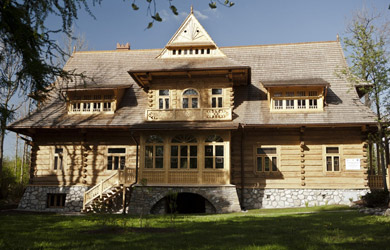
GALLERY OF 20TH CENTURY ART AT OKSZA VILLA
(branch of the Tatra Museum)
Zakopane, ul Zamoyskiego 25
+48 692 029 817
Oksza villa (earlier named Korwinówka) was designed in autumn 1894 for the wealthy government mining official Wincenty Kossakowski and his wife Bronisława who came from the Silesian town of Sosnowiec. It was the third house to be designed by Stanisław Witkiewicz in the Zakopane Style.
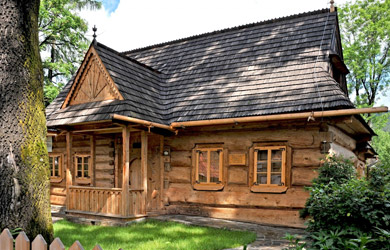
THE MUSEUM OF THE ZAKOPANE STYLE - INSPIRATIONS
(branch of the Tatra Museum)
Zakopane, Droga do Rojów 6
tel. 18-20-122-94
The Museum holds the permanent exhibition Zakopane Style – Inspirations. The display shows the roots of the Zakopane Style: the regional architecture, arts and folk crafts, as well as ethnographic collections from the end of the nineteenth century, and in particular the collection of Maria and Bronislaw Dembowski.
The venue of the exhibition, a wooden Highlander house – in the past owned by the Highlander Gąsienica Sobczak family – is one of the most valuable historical regional buildings in Zakopane.
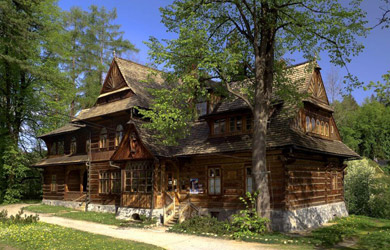
THE MUSEUM OF ZAKOPANE STYLE AT VILLA KOLIBA
(branch of the Tatra Museum)
Zakopane, ul. Kościeliska 18
tel. 18-26-37-065
The Koliba villa, the first building erected to Stanisław Witkiewicz’s design in the Zakopane Style, is situated at Kościeliska Street, Zakopane’s oldest street with time-honoured houses and characteristic Tatra crofts at every step. In these surroundings we can better understand Stanisław Witkiewicz’s concept.
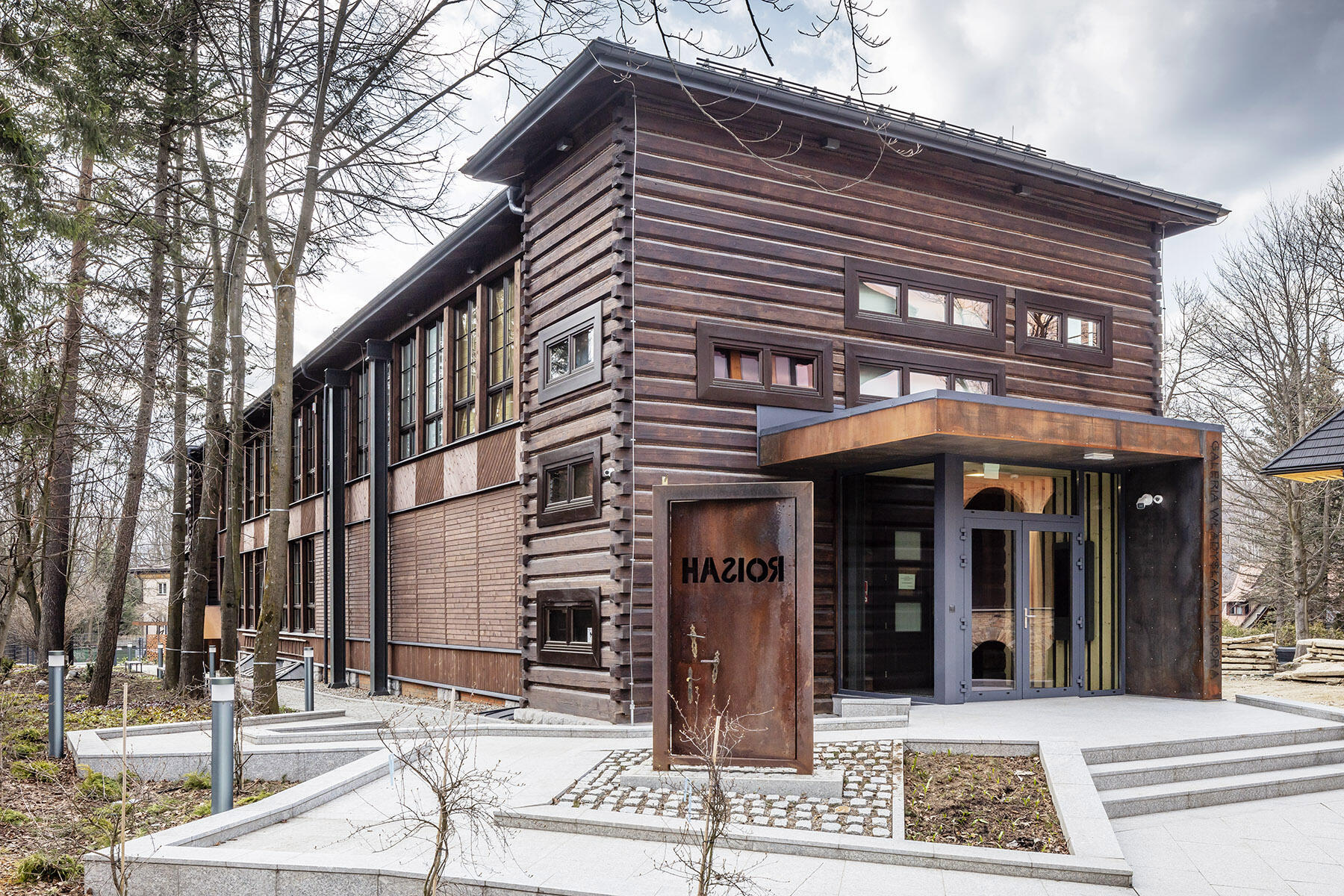
THE WŁADYSŁAW HASIOR GALLERY
(branch of the Tatra Museum)
Zakopane, ul. Jagiellońska 18 b
Originally run by the artist, it is a gallery of his works. Born in Nowy Sącz in 1928, Władysław Hasior was first educated in Zakopane under the supervision of the outstanding teacher and artist
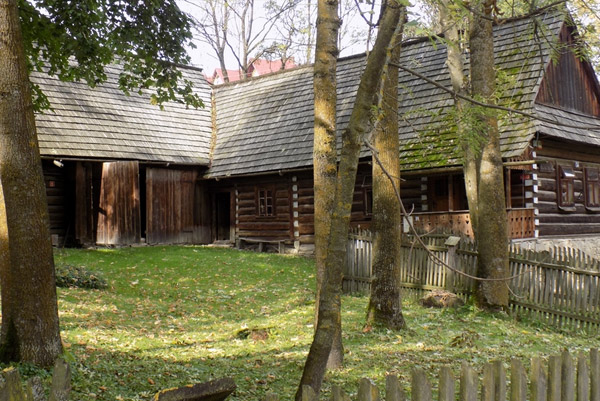
THE KORKOSZ FAMILY CROFT IN CZARNA GÓRA
(branch of the Tatra Museum)
Czarna Góra, Zagóra 86
CLOSED FOR RENOVATION
Czarna Góra, one of fourteen villages in Polish Spisz, dates back to the late 16th/early 17th century.
In the northern part of Czarna Góra, in an estate called ‘Zagóra’, there is a wooden croft owned in the past by the affluent local Korkosz family. The layout of the buildings reflects the development of the Spisz croft from a simple bipartite one (consisting of a cottage and a stable) at the end of the 19th century, to a multipartite one in the 1930s.
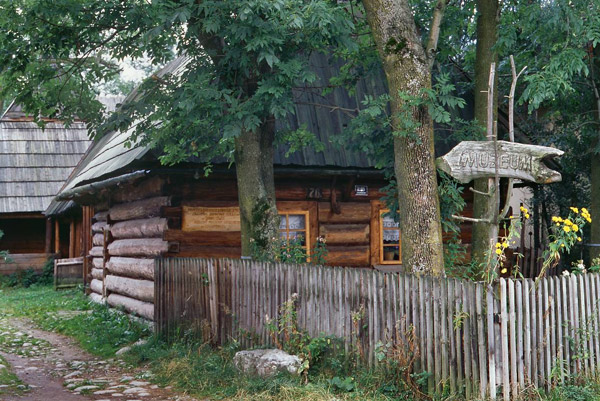
THE SOŁTYS FAMILY CROFT IN JURGÓW
(branch of the Tatra Museum)
Jurgów 215
Jurgów is the south-westernmost village in Polish Spisz. Among its densely arrayed houses, one can find a small number of relics of Spisz wooden architecture in addition to brick houses with decorated façades typical of the region.
The Sołtys croft was built in 1861 by the great-grandfather of the last owner, Jakub Sołtys. Then members of the successive generations of the family inherited the croft. After World War II, part of the family moved to a newly built house while the Tatra Museum purchased the old croft in 1982 with a view to putting on an ethnographic exhibition here. In contrast to the rich Korkosz Croft in Czarna Góra, the cottage and the farm buildings making up the Sołtys Croft are an example of a poor turn-of-the-century Spisz farm.
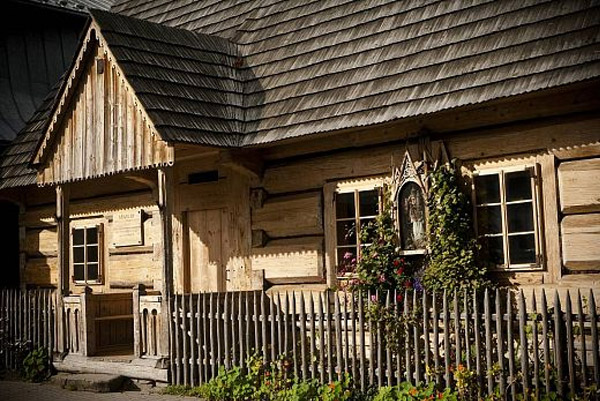
MUSEUM OF THE 1846 CHOCHOŁÓW UPRISING
(branch of the Tatra Museum)
Chochołów 75
The village of Chochołów in the region of Podhale has a rich history beginning early in the 16th century.
The village owes its fame in the region of Podhale to the Chochołów Uprising of 1846, which was a short-lived armed action against Austria during the Cracow revolution preceding the 1848 revolution called the Springtime of the Nations.
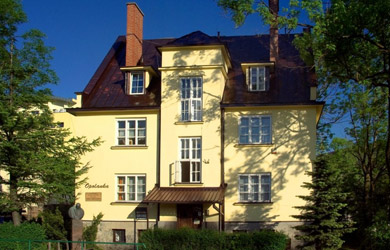
THE KORNEL MAKUSZYŃSKI MUSEUM
(branch of the Tatra Museum)
Zakopane, ul. Tetmajera 15
CLOSED FOR RENOVATION
The Kornel Makuszyński Museum is Zakopane’s second biographic-literary museum after the Jan Kasprowicz Museum in the Harenda. It is based in the Opolanka house where the Makuszyńskis had stayed during their almost annual summer and winter visits to Zakopane between the two World Wars, and where they settled after World War II. Many precious objects in the couple’s possession and their large library perished in Warsaw during World War II. The Makuszyński Museum houses merely a fraction of what the writer, an art collector on friendly terms with many outstanding artists, had assembled. The Museum was set up in 1966 following a donation made by Janina Gluzińska-Makuszyńska (1896–1972) the writer’s widow.
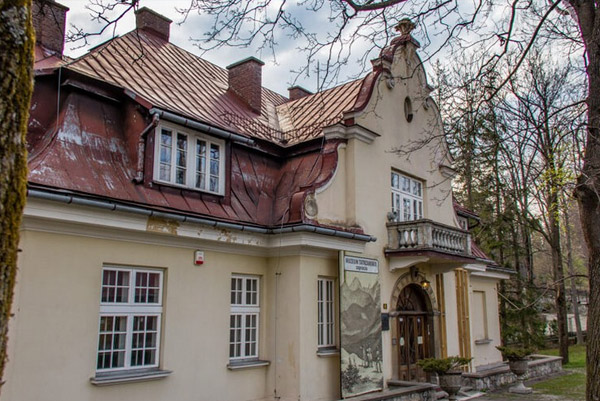
THE SCIENTIFIC AND ADMINISTRATIVE HEADQUARTERS OF THE TATRA MUSEUM
(branch of the Tatra Museum)
Zakopane, Droga na Koziniec 8
Tel. +48/18-20-152-05, +48/18-20-129-35
e-mail: biuro@muzeumtatrzanskie.pl
open: Monday to Friday 8:00 – 16:00
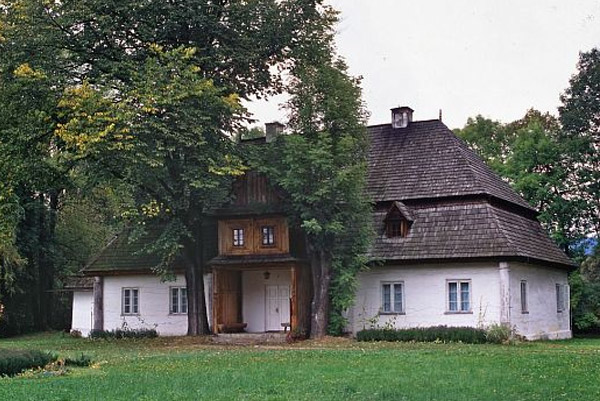
ŁOPUSZNA MANOR
(branch of the Tatra Museum)
Łopuszna, ul. Gorczańska 2
tel. 18-26-539-19
Travelling from Nowy Targ in the direction of Czorsztyn, it is worthwhile visiting the village of Łopuszna, beautifully situated at the foot of the Gorce Mountains and, while in the village, see the manor, formerly the seat of the noble patriotic families of the Lisickis, Tetmajers and Lgockis.
The grange at Łopuszna dates back to the 16th century. The manor was built much later, about 1790, by Romuald Lisicki, a former confederate of Bar.


